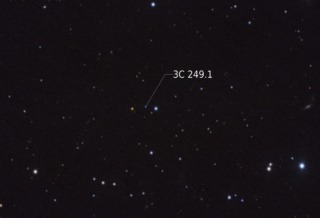
- Constellation: Draco
- Right Ascension: 11h 04m 13.8777s
- Declination: +76° 58′ 58.170″
- Distance: 0.311500 redshift
A quasar or quasi-stellar object is an active galactic nucleus that appears star like in appearance because of the extreme distance. In 3C 249.1 case, the light from there took 3.9 billion years to reach us from our point of view.
- Details
- Category: Quasars
- Telescope: Explore Scientific 127 Refractor
- Camera: ZWO 1600 MM
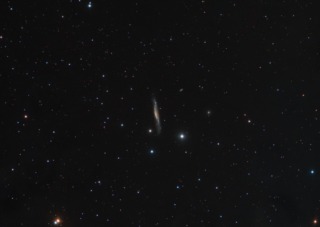
- Constellation: Ursa Major
- Right Ascension: 10h 01m 20.99s
- Declination: +55° 53′ 56.5″
- Distance: 1.413 redshift
NGC 3079 is a barred spiral in Ursa Major, but for me the real "star" in this image is the Twin Quasar. Which is a single quasar that appears doubled by gravitational lensing by a foreground galaxy. It took the light 8.7 billion years to arrive here. The light from one component takes an additional 14 months to arrive having taken a longer path. This was the first observable object demonstrating the effects of gravitational lensing.
- Details
- Category: Quasars
Read more: NGC 3079 and the Twin Quasar
- Telescope: Explore Scientific 127 Refractor
- Camera: ZWO 1600 MM
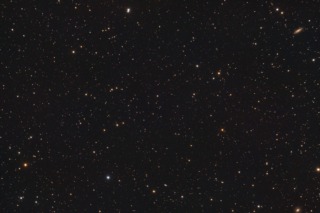
- Constellation: Virgo
- Right Ascension: 12h 29m 06.7s
- Declination: +02° 03′ 09″
- Distance: 0.158339 redshift
Somewhere in this image is Quasar 3C 273, an extremely distant galaxy, but shines with the light of a near by star. When first discovered, the presented a paradox. In images they look like a star, but their red-shift, the amount their light is shifted towards the red side of a spectrum, suggested an object billions of light years away. The name quasar is a abbreviation from quasi-stellar object (QSO). 3C 273 was the first object to be identified as a quasar. It is one of the brightest and closest optical quasars to us at 2.4 billion light years away when the light left the object. A quasar is active galactic nucleus that is powered by supermassive black hole that is surrounded by an accretion disk with in falling material. The luminosity given off can be several thousand times brighter than an entire galaxy.
- Details
- Category: Quasars
- Telescope: EDT 80mm Reftactor
- Camera: ZWO A071 Color
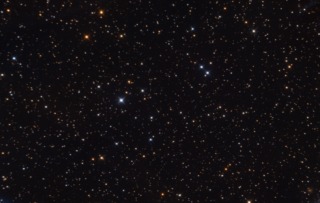
- Constellation: Auriga
- Right Ascension: 05h 42m 36.138s
- Declination: +49° 51′ 07.23″
- Distance: 0.545 redshift
3C 147 is a quasar located in the constellation of Auriga. A quasar is a term that originated with the term quasi-stellar object (QSO). When first discovered, they looked like stars, but their spectrum resembled a galaxy, and when their red-shift of their spectrum was measured, it indicated an object at extreme distance, which was quite a paradox. They now are identified as a active galactic nucleus powered by a super massive black hole with in-falling matter creating a light source that can be thousand times brighter than an entire galaxy. The red-shift of 3C 147 indicates that the light we see today took 5.1 billion light-years to reach us.
Find the quasar!
- Details
- Category: Quasars
- Telescope: GSO RC10
- Camera: ZWO A071 Color
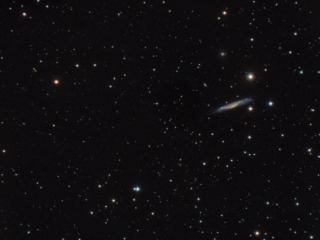
- Constellation: Ursa Major
- Right Ascension: 10h 01m 20.99s
- Declination: +55° 53′ 56.5″
- Distance: 1.413 redshift
The Twin Quasars were one of the first observable effects of gravitational lensing. Light passing through a galaxy YGKOW G1 and its associated cluster located between Earth and the quasar is bent by the gravity of the galaxy cluster to form the double image.
Interestingly the light from the "b" image arrives about 14 months later than from the "a" image due to the extra distance it travels due to the lensing effect. The by redshift measurement of the quasar the estimated distance is 7.9 to 14 billion light years away. The quasar is near magnitude 17, and the images are separated by 6 arc-seconds and is located in the constellation of Ursa Major.
Article on Twin Quasars Hubble Image:
- Details
- Category: Quasars
Read more: Twin Quasars (2017)
- Telescope: EDT 80mm Reftactor
- Camera: Atik 314l+
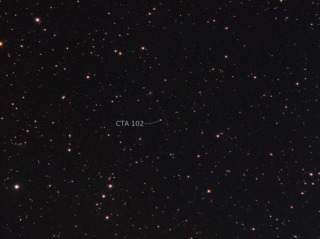
- Constellation: Pegasus
- Right Ascension: 22h 32m 36.4s
- Declination: +11° 43′ 51s″
- Distance: 1.037 redshift
Blazar CTA 102 is another blazar that has flared up recently. Discovered in the 1960s by radio telescope surveys.The unidentified radio source was originally speculated to be aliens, but was later identified as a type of quasar.
- Details
- Category: Quasars
- Telescope: EDT 80mm Reftactor
- Camera: Atik 314l+